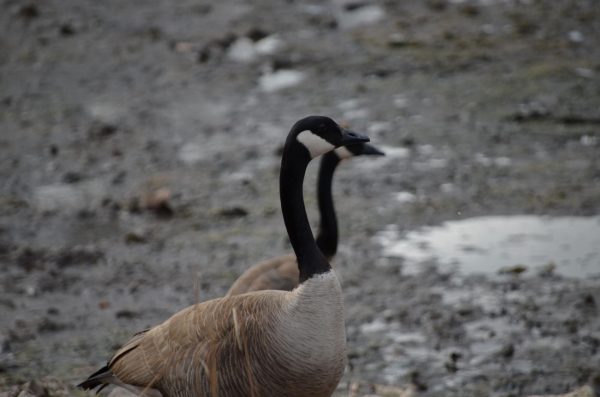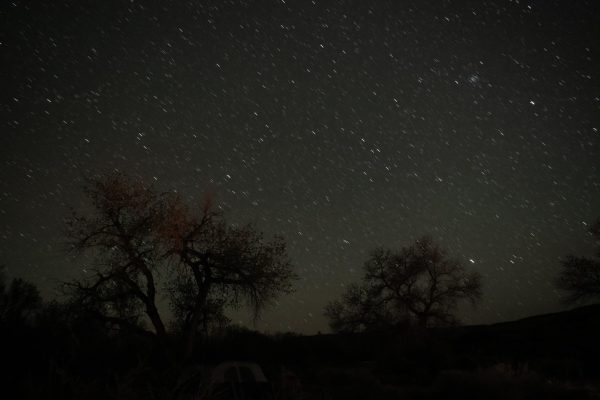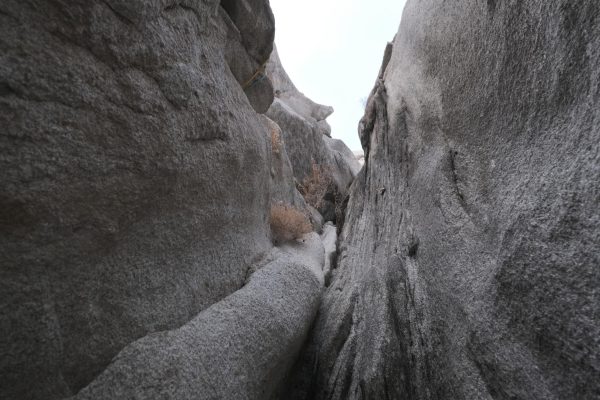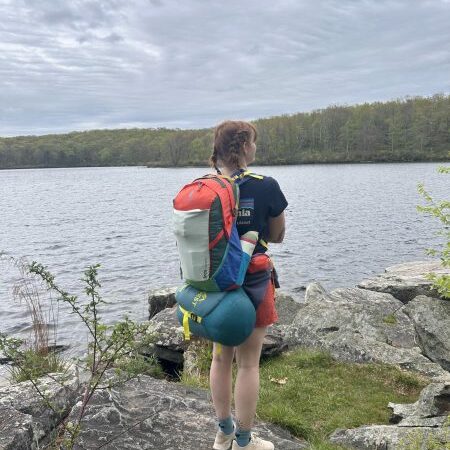The Geese in Our Gaggle
“It is that time of year again.” As the weather turns in those end-of-year months, I swear that phrase pops up at every turn. For the holidays, for college finals, and for when the first snow falls. But for one of my professors, this phrase came up differently. In mid-November, he mentioned that the first Canada geese had appeared in his pasture. It was that time of year again.
Even if you have never heard of Canada geese, I would bet you have seen them. They are migratory birds that appear every winter in parks, golf courses, and almost any grassy area they can find. Their heads and long necks are a sleek black color, leading to a light brown body and dark wingtips. Once they arrive you can often see them in groups grazing on short grass or swimming lazily in park ponds. This area and other water-rich areas in the United States are the geese’s wintering grounds. Every year they migrate from Alaska and northern Canada to warmer places to feed and prepare for the next breeding season. Some groups can even be seen here year-round. Yet, during the geese’s stay, too often they get too close to people, or people get too close to them. This leads to numerous defensive attacks from geese and other negative human-goose interactions.
In 2018, author John Green started a podcast called The Anthropocene Reviewed. This podcast went on until 2021 when Green published a novel with the same name and concept. The podcast dwells on various aspects of human life, rates them on a five-star scale, and includes a review of Canada geese. Green’s piece on Canada geese is beautiful and reflective, discussing how the species bounced back from near extinction to a population near 5 million. He covers “live decoys” that hunters used the geese for before 1935, intersperses the piece with personal anecdotes, and concludes with a humorous three-star out of five rating. With Green’s hauntingly beautiful narration, the main idea of his Canada goose review was a thought that stuck with me throughout the goose season: people often see them as pests, but we are the ones who made them this way.
Before “Manifest Destiny” and widespread urbanization in America, Canada geese always followed their yearly migratory pattern. When they flew south, they flocked around lakes that bolstered the short grasses they evolved to eat, and before the Great Salt Lake saw floods of pioneers, the wetlands around the lake were the only habitable areas for the Canada geese. However, our urban spaces have drastically changed that. As John Green explained in his review, the introduction of urban green spaces dramatically expanded the range of geese. Nowadays they can be seen in areas of the Salt Lake Valley that are as far from the lake as can be. With the increased range the goose populations have skyrocketed and in many areas of the Midwest the geese have become year-round, sedentary residences. Thus, the interactions between humans and Canada geese have only increased. There are more instances of defensive geese going after people. There are even potential zoonotic diseases that can be passed from geese feces in recreational areas to people. More Canada geese has meant more negative consequences for us humans. Yet if it were not for our own expansion, urbanization, and obsession with green spaces, the geese would have stayed around the lake, far away from us.
Not only do humans often see Canada geese as pests, but the geese themselves have earned a reputation as human haters. Of course, this also comes simply from the fact we overlap. The primary areas Canada geese overlap with humans are the southern wintering grounds, now in recreational green spaces. This means geese are more often surrounded by frolicking, ignorant humans, clearly in the way of their feeding. This is also something John Green comments on in his review. There is a strange dichotomy between humans and Canada geese. Although not domesticated, geese have come to depend on us for their food and nesting areas. And yet, in everyday goose life, we are only seen as threats. Humans have changed the world so much, so much so that the Canada geese have reached places they would not have otherwise. Yet in this quick environmental change, neither species evolved to live together.
It is that time of year again. For Thanksgiving, I was able to go home to southern Utah. Driving through my hometown I passed a golf course, still vibrant green in the autumn colors. There was a gaggle of golfers making their way across the field with their large bags, and there was a group of Canada geese, all five or so sitting and sleeping peacefully on the grass. I am quite fond of this species of geese. They are large yet gracile, dark and poignant yet light as a feather. I know better than to try and approach them, but I wonder if that will ever change as we learn to live with them. As humans continue to mold our earth, we are going to have to live with it, and all the creatures we affect.

The post The Geese in Our Gaggle appeared first on Wasatch Magazine.






